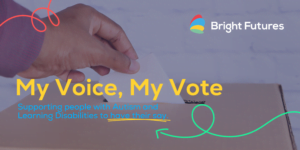Individuals with learning disabilities will sometimes have multiple conditions that co-exist and overlap. Complex needs can be defined as any overlapping conditions that limit a person’s ability to learn or to navigate the world they are in. However, complex learning difficulties and complications associated with autism are some of the most common situations leading to complex needs.
These conditions can mean that they present with a range of issues and combination of needs that affect their: –
- mental health
- ability to form and manage relationships
- behaviour
- physical appearance
- health
- sensory input
- communication ability
- cognitive ability
People with complex needs, whether emotional or educational, can often find themselves in need of far more support than others. As you might expect, the first step to beginning to help those with complex needs is to first identify what those needs are and then create tailored, personalised care and support. Specialist person-centred support can help individuals to engage effectively and to participate meaningfully in the wider community.
Complex Learning Difficulties and Disabilities (CLDD)
People who are found to have complex learning difficulties and disabilities have overlapping conditions that each present their own set of challenges. When a child is diagnosed with co-existing learning disabilities, it can be overwhelming to find a method of helping them. This is why a personalised learning plan is so important.
There are three categories professionals typically use to define the needs of a child: severe learning difficulty without disability, profound and multiple learning difficulty, complex learning difficulties and disabilities.
Autism Spectrum Disorder (ASD)
- Children and young people who have additional needs associated with an autism spectrum disorder (ASD) can be described as having ‘complex needs’.
- 60-70% of people who have ASD will also have a learning disability.
- ASD can also present alongside a diagnosis of Pathological Demand Avoidance (PDA), mental health difficulties, and severe sensory integration difficulties.
- In conjunction, all of these conditions can be defined as presenting a spectrum of complex needs. Often, this is named complex autism and associated neurodevelopmental disorders (CAAND).
Help For Complex Needs
- When a person is diagnosed with complex needs, it can be difficult to outline exactly what support is required to meet their broad range of needs.
- At Bright Futures Care, we have a wealth of experience in caring for individuals with overlapping conditions. Whilst every person is different, it is always helpful to first produce a care plan that explains every need a person might have and how best they need their staff to support them to meet their needs.
- After this has been done, it is far easier to identify the steps required to best help someone learn and develop. Here at Bright Futures Care, it’s our mission to make this a reality.







